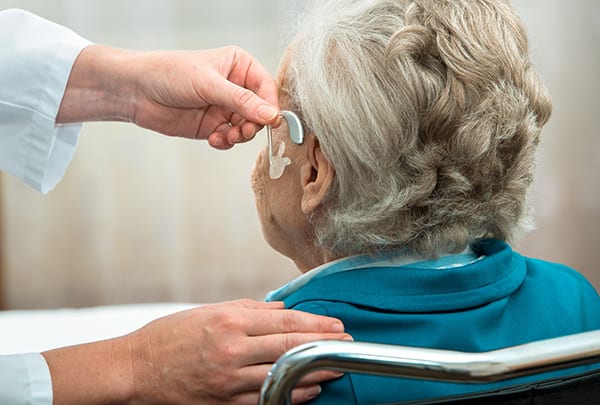
For a hearing aid fitting to be successful, some standard procedures and processes are carried out for optimum results. It is more than your hearing instrument specialist (HIS) trying out the correct device to suit your ear. It is useful to know what to expect when you visit your HIS, for examinations, sound checks and vital discussions. As a way to enlighten you further on these processes, please read on.
Otoscopic examination
An otoscope is a hand-held instrument used to peer into the ears. It has a light at one end, which creates illumination into the naturally dark ear canal. Before your hearing aid fitting begins, the HIS will conduct a quick assessment of one or both ears. He or she does this to check for an excessive accumulation of earwax. This is also done to get a proper visualization of your ear canal, which comes in handy for ear measurements.
A verification of sound amplification
The hearing specialist can only verify your hearing aids’ correct amplification by carrying out the real ear measure. It helps to know how loud sounds are perceived in the ear canal. While connected to a microphone, the tube will be placed in your ear to measure the degree of sound close to your eardrum.
After the first part, the HIS will now carefully insert the hearing aid without removing the thin probing tube already in there. At this point, the hearing specialist will play sounds at varying levels. It begins from the softest to the loudest sounds. Amplified sounds will be adjusted to comfortable levels while you listen for any uncomfortable auditory sensations.
A discussion on available technologies
This stage involves a conversation to educate you on the different hearing aids available. The discussion includes making recommendations based on your personal ear assessment and specific needs. When you’re comfortable with the various listening environments, the HIS will mention the multiple features and hearing aid technologies available.
You are likely to hear the digital and analog types available in the market. If your hearing instrument specialist finds it necessary, he or she will take an earmold impression to order for your device. Keep in mind that hearing aid devices are custom-made and attend to only your specific needs.
Care and adjustment instructions
This is usually the last stage of your hearing aid fitting. Before your appointment ends, the HIS’s responsibility is to educate you on your hearing devices’ proper care. They will demonstrate how cleaning should be done and the circumstances under which you should not use the device. For example, you are not supposed to have your hearing aids inserted when you go out for a swim or take a shower.
The objective is to keep them dry and clean as much as possible. Device care will include knowing when to replace the batteries and how to store them at night. In another breath, hearing aids will require some adjustments after periods of usage. Learning to adjust your device will also include mastery in using multiple settings based on the listening environment. Lastly, your HIS will schedule a follow-up appointment before you leave.






